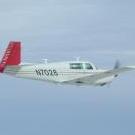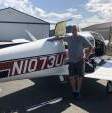Leaderboard
Popular Content
Showing content with the highest reputation on 06/17/2021 in all areas
-
Talked with Jonny and Barry this evening. Completely cordial and forthcoming was the conservation, to a point I came away with the feeling that they are really trying with the limited resources that they have. They both seemed energetic and enthusiastic. If there were some defeating thoughts within them, they did not escape. They did mention the need build a modern aircraft............. Did they just implie that maybe an investor was in the works????? Maybe, maybe not. I make an assumption here. They do not want to announce anything, obviously, untill pen is to paper (if that is even done any longer?) Jonny did mention that he has been quiet here on the forum purposely, and to please not take that as a negative thing. The back pressure springs??? will be in next week. Sorry guys (and girls) that there is nothing concrete but, better than nothing, and I was glad to talk to them.4 points
-
Methyl cellulose is synthetic soluble fiber as in Citrucell (OTC remedy to support regularity). It may function as a glue but it’s not a purpose designed adhesive. I know this because a resident MD sent a funny message to me pointing out that I had confused Citrucell (Methyl Cellulose) with Metamucil (psyllium fiber). Any tank repair requires a thorough flushing before applying adhesive.3 points
-
For your viewing enjoyment… Video quality may have some funk… Shots inside the factory and in flight… -a-2 points
-
I have an IO-550. I had inconsistent readings. Obviously you want to check after drain down, preferably a few hours or more. My mechanic however advised me all Continentals with wet sumps have a "capillary" problem. The oil will capillary up the tube and give a "high" bad reading with the stick installed. The only reliable way to check the oil is after drain down, remove the stick, wipe it, wait for the oil in the tube to drain back (about 30 seconds) insert the stick and then pull up and read the stick. Since I usually remove the stick in the hangar for insertion of the "engine saver" tube, on preflight of the cold engine I insert the stick, pull up and read. I have been getting very consistent and accurate readings. On the road, on a hot engine, I just make sure I have "some oil" and the belly and exhaust do not show signs of oil loss as there is no way you are going to get an accurate reading until drain down. That all said, I have found the hidden amount before drain down is about a quart. So on a hot engine, if it reads 5, I know I got 6.2 points
-
When I made my upgrade decision, I started with the autopilot. In three years, I repaired my intermittent KAP 150 computer twice and replaced it with a used unit when it failed the third time. So, I wanted a GFC 500 for reliability. The G3X is “newer” in the sense that in incorporates GFC 500 autopilot logic and integrates directly with the G5 standby. This means that you always have the autopilot if either the G5 or G3X fail. I believe that the TXi has more 3rd party interfaces and is going to the better choice if you want to integrate with non-Garmin equipment especially autopilots. If you use it with a GFC 500, you’ll need a G5 or GI 275 to drive the autopilot and you won’t have the redundancy if that device fails. Skip2 points
-
<Note to the gentle readers: epic rant follows. Don't espouse your "knowledge" based on a quick Google search. Some of your readers have real knowedge . . . . > Nitriding is case hardening by applying a hard outer layer of, for example, titanium nitride or aluminum nitride to the part in question. It's harder than a file (filing a nitrided part will clean it and make it shiny, but it also dulls the file very quickly). It may be 0.001" thick, sometimes even twice that if you ask for it to be done. Case hardening in a furnace is different, nothing is added to the steel. The part in question is heated up to change the phase of the steel and arrange the various atoms into a different structure. Controlled cooling is also required, lest the pesky atoms rearrange themselves back into the not-so-hard structure they had before. This won't work with low-carbon steel, there needs to be at least 0.5% carbon in it; traces of other elements will affect the temperatures required and the resulting hardness. Works great with many tool steels. At work, I harden various tool steels for wear resistance. Typical values are HRc=50-52, although some steels can reach 56-58 without becoming brittle (things like CPM9V get quite hard, much more so than H13, with greater wear resistance. But much more expensive to buy, more difficult to machine and require hotter temperature to harden). What kind of wear? It sits 1/8" away from a 1/4" hole through which molten fiberglass-reinforced nylon is injected at 600°F and 30,000 psi. After a half million cycles, there is wear that we can measure (almost 0.001" deep) and they are replaced. When making hardened parts, the piece is machined to size and often left 0.001-0.002" oversize, then heat treated, then cleaned up by grinding, high-speed milling or lathe turning with diamond tools. More reasons why hardened parts cost more. The only difference between case hardened and through-hardened parts is the time, trouble and expense to make a large part hard all the way through--depending on size, it can sit in the furnace for a long time near 2000°F, and cooling the center can be difficult. I have seen nitrided parts, almost 0.001" deep, run for decades without issue. This is common in industry for sliding parts. Quarter inch diameter pins that slide forwards and backwards two or three times a minute, twenty four hours a day, several million times, often several dozen at a time being pushed with 8-10 tons of pressure. Large pins, 2" in diameter, used to align two halves of a mold as it closes, twice a minute, with 40-50 tons pushing them when they engage. In over 30 years, I've seen guide pins break twice. Hundreds of molds, millions of cycles each, at five factories (one had 400 active molds, several dozen built in the late 80s, untold millions of cycles, still in production two years ago with the original nitrided guide pins and ejectors). Hardening is a complex subject, best done by someone experienced enough find and follow the steel mill's procedure. Sure, you can grind a piece of O-1 to an edge, hit it with your propane torch and dip it in some water, and it will be a functional cutter. But that ain't what we're talking here, and it ain't how cranks and cams are done . . . .2 points
-
I suppose I started (resurrected) this whole conversation most recently with my thread asking if it's a sin to buy a Cirrus. That conversation evolved into the realization that flying with your wheels hanging out is just ugly and awkward. And that the Bonanza was a better fit for my growing family. First transition training lesson has been done in the new 36 and I'm flat out thrilled. Not an ounce of doubt or regret in my purchase. The Cirrus didn't fit me that well being 6'2" or so. The Bonanza feels just right and way more stable in the bumps. I described it as built for a king. And with 1450 useful that is likely to increase when I redo the panel, it's the perfect family SUV. I flew my E for one of the last times today and honestly, I'm sad to see her go. It's an amazing 2 place airplane and incredibly economical. I'll always have a special place in my heart for the Mooney brand and my sweet 59Xray. Snce we're talking about 2nd planes, I already pointed out to my wife we have 2 planes this month. 2 hangars, 2 annuals.... I already floated the balloon that we need to keep the 2nd hangar and get a carbon cub to mess around with. She wasn't amused. But I'll keep working on her.2 points
-
Quick Update - I connected with Parker at airspeedinsurance.com. He delivered! My premium decreased by ~13% while I increased my hull coverage by ~25%. The process was super easy and fast. If you don’t like your current broker, give Parker a call!2 points
-
He's not landing as you (or I) would define it, he's flying with the tires rolling down the runway. I've seen a lot of folks use this "technique". I did it while getting checked out in the Mooney. I was fast but I made it work. After my rather buttery touchdown, the instructor pulled the yoke back. The plane lifted off, he flared and landed again without adding power. I was embarrassed. It really is the worst of both worlds control wise. Mushy control through the yoke and diminished steering/braking. Every landing requires the pilot to transition from flying to high speed taxi. Why some think it's just fine to spend an extended period of time straddling that line is beyond me.2 points
-
Hello All, I've been a lurker here for a couple of years. Back in March traveled to Durango, CO to do a pre-buy on a '67 F model. I ended up purchasing the aircraft and have put 100 hours on it since then. I have a bit of a unique situation - I'm Canadian, live in Mexico City, and do business between the USA and Mexico. Because my life is so spread out, I wanted an aircraft that could carry a decent payload, make it from the US border to Mexico City non-stop, and be fun to fly to the beach. The M20F beat out everything else I was looking at on price, simplicity, and pure fun. After signing the paperwork in Durango, I flew to Sandpoint, Idaho to visit friends, followed by a trip to my US base in Portland, Oregon, and then down the coast to Los Angeles where I picked up my mother (who got me interested in flying as a kid) and flew to Mexico City via Bisbee, AZ, Alamos, Sonora (I highly recommend the pilot-owned Hacienda Los Alamos as it has a semi-private strip), Zacatecas, and finally Mexico City. In Los Angeles I got my first taste of flying in a Bravo and even flew in IMC over the top of LAX on the way to Whiteman. Heading south through Mexico we flew over the famous Copper Canyon, a complex of six canyons covering 25,000 square miles. At first I was concerned that there wouldn't be anywhere to set down in an emergency, however I was pleasantly surprised to discover more airstrips embedded into the hills than I could count! I wonder what they use them for... I'm now on the tail end of a two week round trip from Mexico City to Bellingham and back during which I've had the opportunity to land in the Alvord Desert Playa, a must do if you're passing through Southeastern Oregon. The last 100 hours hasn't been without its challenges; the oil probe at the back of the WOLF oil filter relocation kit came loose at some point before arriving in Bellingham and started leaking about a quart of oil per hour. Advanced Aircraft in Troutdale got me sorted pretty quickly. On my girlfriend's first flight, I didn't close the door properly and it ended coming open mid-flight. Luckily we convinced the door to behave and my girlfriend still wants to fly with me. I'm attaching some photos of my adventures and will hopefully get a chance to meet some of you here on the forum or at one of the Mooney meetups this summer!1 point
-
Steingar’s origami has been on display where kids and aviation come together… (old fuzzy memory) Speaking of old and fuzzy…. Ross isn’t old enough to know his fibers as well as he does…. Best regards, -a-1 point
-
Just heard from Avemco. Rates going down 10% because I've been with them for a year. And will go down another 9% after another 75 hours. This appears to be my first real break in insurance since I I've owned my Mooney.1 point
-
.4 -13 1SM1-T .GEAR WARNING SWITCH https://www.alliedelec.com/product/honeywell/1sm1-t/70120198/1 point
-
Will have owned my Bravo 29 years in August. On engine number 3. Have taken the APS Course and got a lot of value from it. While I believe in LOP and run some Continentals smoothly that way, in short tests my previous engines were not happy campers running that way. I have the GAMIs. First engine made it to 300 hours past TBO as a result of the change to the Bravo engine. The 2nd would have made it to TBO were it not for an incident during an Annual that made it financially practical to get a new Reman at 1600 hours. Turbos on the first 2 engines needed to be OH'd at mid time. In spite of running ROP l had expensive exhaust issues with both the 1st and 2nd engines. Run cross country 29/2400 (75% Power). From my perspective of 10,000 hours flying Mooneys and 5,500 hours flying Bravos, I'd stick with ROP. Keep a bucket of cash on hand if you rationalize for whatever reason and choose to run LOP.1 point
-
Check the torque on the rocker cover screws. If you have silicon gaskets, be sure to not over tighten....I've found a lot of APs don't have the latest SB and apply too much torque causing the gasket to mushroom out and cease leaks. WE chased that problem for months with our old C model.1 point
-
Owners are always going to try to convince you the direction they went is the best way. Lots of options these days but I do feel the larger display panels modernize the panel/plane and will continue to do so in the future.1 point
-
Also, the sniffle valve is supposed to leak. That’s why it’s there. When the engine is running its sucked closed/sealed, but when the engine isn’t running, it opens to let the intake manifold drain. Usually a few drops of fuel after shutdown.1 point
-
This was my thinking, too. It all started with replacing the unreliable KI256 and Servo's on the KFC225. Every 18 months and 2x in IMC, I was done. Once you start tearing it apart, you can consider the options - G3X/TXi, dual G5's, GI275 and consider new nav/coms, etc... It's all about what you can afford or want to spend and how much you can/want to integrate devices. I remember buying my 1st flat screen TV and was debating over 2 models. The salesman asked me what I had now and I told him a 20 year old 32" tube TV. He told me it didn't matter, either one would be so far superior to what I was used to that I would be happy and he was right. That lesson seems to apply here as well. I do worry about future obsolescence. Even at 8-10 years old, the G3X is getting old in tech terms. How are these units going to age? And how long will Garmin support them? Paul1 point
-
The acclaim is nice but it also comes with 2 turbos that wear out and intercoolers on top of your plugs…1 point
-
I always celebrate when MSers show up after some time off… Yay! A Jonny sighting! David, That is great to hear! The sound of Crickets can be disheartening… Like having a friend you haven’t heard from in a while…. And nobody else has heard from them… They have a big job in front of them… When it comes to finance… Jonny has seen that before… few people have that strong of a resume… Best regards, -a-1 point
-
1 point
-
1 point
-
Sounds like what Dr. Bill used at the grass strip in NC before it closed. Seems like someone bought his Mooney, and someone else bought his fabric hangar.1 point
-
To be fair, i honestly think whichever one you go with, you will love. I doubt you'll be able to differ. The big difference is one drives a garmin autopilot, and one drives a KFC. They are both pretty screens with tons of bright and shiny colours that make your life easier to fly, and make your plane look cool. Which ever one you go with, you won't regret getting one over the other. I've seen the TXI display, and honestly even though it is "crisper" in a sense, I don't have trouble reading either of them. People will recommend whatever they have. Steven, don kaye, and 201mooniac will recommend the TXI because thats what they have and payed for. DavidV, PMc, and me will recommend the G3X, because thats what we have. In the end, its practically the same thing.1 point
-
Great pirep for Parker and airspeed Insurance! Way to go Parker! Thanks for sharing the pirep Chris! Best regards, -a-1 point
-
Old memories….but I think I tried B first but could not get consistent closure…too tight. Also, there are a series of rivets on B, making it more difficult to get the seal to hold and causing a variable gap. I think I ended up with a something more like A, but adjusted to the gap.1 point
-
1 point
-
Same here. Sold the Mooney a couple months back and miss her. Wish I could have justified keeping her. The new plane, a Mirage, is great with all of its capability but the comparison is sort of like a Vette vs an Escalade.1 point
-
1 point
-
I have twin G3Xs and while they are old technology they contain every garmin feature out of the box. It's amazing to me that garmin is able to get away with charging exorbitant amounts for synthetic vision on the G1000 for example. It feels like they packed every feature possible into the G3X since it was for experimental and then realized it would be too much of a pain/not in their economic interest to remove features for the certified version. Correct me if I'm wrong, but the biggest benefit is the ability for the G3X to control the other garmin devices such as radios or transponders. I really like being able to tune new frequencies or the transponder directly from the screen in front of me.1 point
-
So the preliminary answer is in... Looks like the culprit was not one, but three sources. (1) Sniffle valve may have had a small bit of debris in it leading to a drip; (2) an engine hose had come loose (recall: this engine was just re-installed 12ish hours ago); and (3) a nut had come loose. Those three things addressed - no oil noticed in the ground test afterward. Knock on wood that clears things up for now! Thanks to M/S for the inputs here - they were helpful!!!1 point
-
1 point
-
You only have to lubricate once ! Because then the engine leaks again and it does the job by itself.1 point
-
A friend got a field approval to add 120 Lbs of weight to the tail of a Rocket. He made a complete drawing package of the modification, had a DER review the drawings. Their biggest concern is structural. You need to prove the structure can Handel the load. The next concern was that it doesn’t interfere with any control mechanisms. The more engineering analysis you do, the less you will have to pay the DER.1 point
-
Using 1.3 X stall speed in the configuration being used will result in landing speeds that are faster with no flaps. and slower with full flaps. These numbers are further adjusted using the landing weight at the time (There are charts available to adjust for these differences.) One should be aware of actual speed coming over the threshold as 1 kt faster than expected will cost you about 100 feet of lost runway. Flap settings will affect landing speed, stall speed, and planning for touchdown. A Mooney floats too much to not appreciate these differences. Coming over the threshold 5 kts faster than expected at a 2500 foot runway will cost 20% of otherwise useful runway. Depending on conditions, that could be significant. John Breda1 point
-
@Appalachia I just looked at your excel sheet. Something to note, you may want to consider taxes as well in your cost of ownership. The reason I bring this up is Virginia, the location of your main mission has some odd tax implications such as owing 2% of the purchase price annually for any aircraft that stays in Virginia for 90+ days a year. Depending on where your store the aircraft may complicate this, for example if you live in NYC but keep the airplane in NJ but the aircraft is registered to your address in NYC you may have to pay taxes in both states plus Virginia which could ad up to a few thousand dollars a year on lets say a 60K C or E. Aircraft and Watercraft | Virginia Tax1 point
-
…. That might be what Ross is after… There is enough data to find rpm technologies and their full msds…. The link below gives a hint to the msds posted at AS… but only the first page…. Both liquid and gel… Best regards, -a- https://www.aircraftspruce.com/catalog/pnpages/09-03491.php?gclid=CjwKCAjwn6GGBhADEiwAruUcKqb6BVkSjOQI2ACUflbn3Nv-zsIunMl1jsxSv_1OhFzYabSqJQ-xLhoCFZEQAvD_BwE Thanks Anthony, I couldn’t find the MSDS for the gel. Thank you for linking. Looks like rolling my own isn’t worth it. HPMC is pricy stuff.1 point
-
If you get the Bravo to run smoothly at LOP at one power setting, with GAMIs, you'll be one of about three Bravo owners that I've heard of in the world that was able to make that work. If you run at settings where CHT is over 400 consistently, you have two choices: Budget for new cylinders every 500 hours or do whatever it takes to keep the hottest cylinder below 400 (open cowl flaps, add fuel, etc.). I try not to exceed 380. Lycoming printed a booklet for Bravo and Malibu Mirage owners that isn't part of the POH. At seminars and in the booklet they say do not run over 400 CHT and not over 1650 TIT. I don't remember the exact stats from the seminar, but they mentioned that for every ten degrees over 400 that you consistently run, it would shave so many hours from the cylinder life. The first TLS owners that ran at 400+ and 1750 TIT because the POH said you could were fortunate to get 250 hours from their first set of cylinders and 500 from their exhaust system. Then came the Bravo conversion. The oil cooled valve guides plus the conservative info from Lycoming allows many people to go TBO now with this engine. However people that still ran it at book speeds still go through cylinders and exhaust systems. The number one thing that can kill you with this airplane is the exhaust system. Inspect it closely, regularly. The welds give out. If the v-clamp that goes from the turbo to the tailpipe goes out it becomes a blow torch. There have been a few deaths documented from this happening, thus the 2 times re-torque limit on the v-clamp. If the previous owner flew it by the book expect cylinders and an exhaust system.1 point
-
Well, I ended up buying the PMA8000G last year based on a late May 2020 conversation with.... PS Engineering, where they confirmed that the alerts were not available in the 450A at that time. The 200-450-0100 installation manual Rev 3 dated 10/2016 confirms this. The B version came out several months later, in August 2020. The PMA8000G with Flightmate came out in June 2020. Quoting a mistake doesn't harm anyone, it clarifies the issue. I installed a new 450A in a customer's Cirrus in late 2016, and I can confirm it had no Flightmate feature. There are a lot of people buying used avionics and it's important to differentiate features, sometimes upon serial number groups. The prior PMA8000B has two different installation manuals, based on the serial number range. Most people don't know that. There are different features even though the labels are the same to the average person. I love their products, install them for customers, and have swapped out several in my own plane to take advantage of their new features. I'm on my third PS Engineering audio panel in four years, in the same plane.1 point
-
I just had all my AP servos cleaned and checked as parts are becoming VERY scarce. I had a little jitter in my pitch servo after my panel upgrade (and the plane sitting for a long time). Initial thought was the new Aspen needed adjustment, but the shop was adamant that the servo should be pulled before adjusting the Aspen. Turned out to be full of carbon, but no rebuild needed, just servicing. That's when he told me that with the shortage of parts, now is the time to have all the servos checked as sometimes it's just carbon build up and other times minor preventative maintenance can be done before a total rebuild is needed. Other note he had was that he's had a lot of people try to buy servos online to replace their defective ones. Doesn't work and they come in for him for repairs. He then discover that they bought the wrong Part# and he cannot legally put the servo back in the plane, even if he can fix it. Cost a few hundred each vs. the thousands for the rebuild with current price of parts if you can find them. He recommended they should be pulled every so often (5 years or so) when the planes already in for something just to be looked at to majorly extend the servos life. I think I've had one replaced years ago but otherwise never pulled any of them and they were all were full of carbon. But still appear to have plenty of life in them now that they're cleaned up.1 point
-
Exactly, From most expensive to least cause, It could be anything from a cracked case to a oil filler tube O ring. Might I suggest a complete cleaning of the engine then use some magnaflux developer around the suspected areas based on your Mark I eyeball locater. Run the engine hard for a few minutes decowled, and the leak origination point will be obvious. CB's can use spray foot powder if they dont want to buy the proper stuff...1 point
-
When I observed this after a flight, it turned out to be a loose mag that had recently been installed by a well known MSC.1 point
-
If we're going to speculate, I can think of several reasons why four pilots of identical experience flying 50 hours apiece might be riskier than one pilot flying 200 hours. An obvious reason is the potential for miscommunication about the state of the airplane: fuel, squawks, required inspections, etc. Sure, these risks are mitigated by careful pre-flight inspections by each pilot, but we're talking about humans, not robots. All partnerships have at least some minor inefficiencies in communication, and some partnerships are quite sketchy in this respect. Next, since no pilot operates an aircraft exactly the same as another, the likelihood of an incident involving some gizmo being set to an unfamiliar mode by another pilot increases, especially in an airplane with fancy modern displays and navigators. Fuel totalizer again comes to mind, but could also be that one pilot de-selects the weather layer on a moving map, leading the next pilot to think the weather ahead is clear. Next, having a partnership airplane means a change in one pilot's plans due to weather, illness, etc, can adversely affect the plans of another partner - probably one they like and respect. That can increase get-there-itis pressure to negative ends. Finally, since we're dealing with humans, there are going to be cases where one partner commits some personal mistake they try to hide: minor overtemp or overboost of the engine, extending the gear or flaps above their limit speeds, etc.. At least some of those folks might have taken the airplane to the shop immediately as sole owner, but are inclined to let it ride to the next annual in a partnership. These are all reasons why some people would never consider being in a partnership. I don't think any of these risks are large, and I'm not saying they justify any particular increase in premium. But it's not unreasonable to think a multi-pilot partnership has an elevated risk profile vs. a single named insured, even when the average experience and total hours flown in the partnership is identical to that of the single owner.1 point
-
I’m getting a PMA450B. The killer feature that sold me is the ability to keep the copilot on the intercom with the pilot while turning off the radio audio to the copilot. Wife loves that idea. Skip1 point
-
When I compare car or building insurance I was away surprised how low aircraft rates are. Try insuring a $100,000 car for $2000/yr. it was probably never sustainable.1 point
-
Might have a line on a pristine one from a friend who is thinking of an IFD upgrade from us1 point
-
You need a TKS airplane. I leave my door and pilot window open all the time and never had an issue. The fluid dripping off the wings after flying in possible icing conditions is attractive to rodents. Unfortunately it’s also poisonous so my hangar is rodent free! Tom1 point






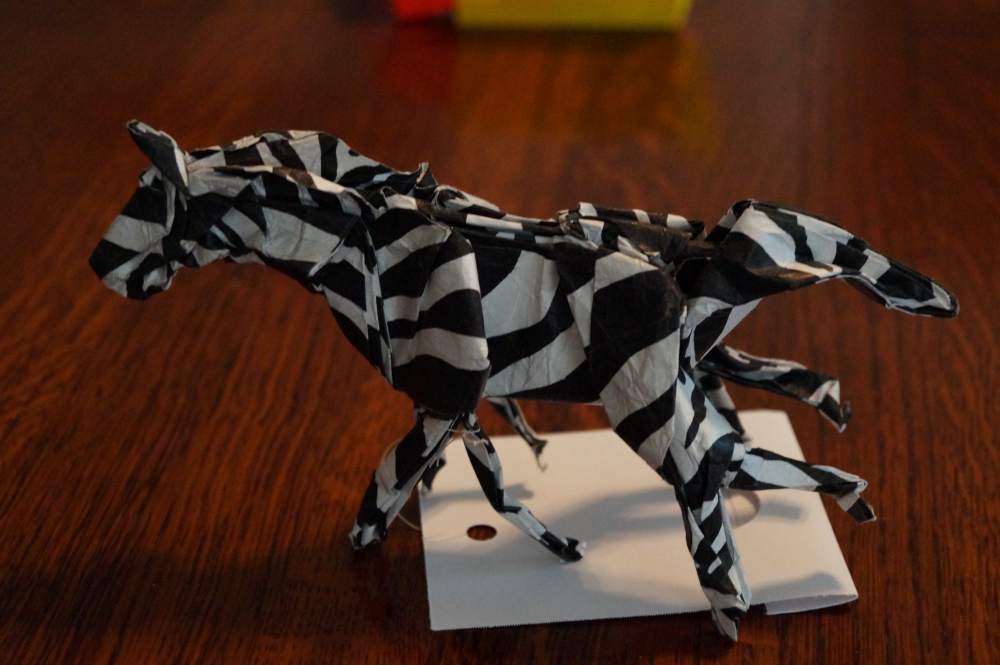
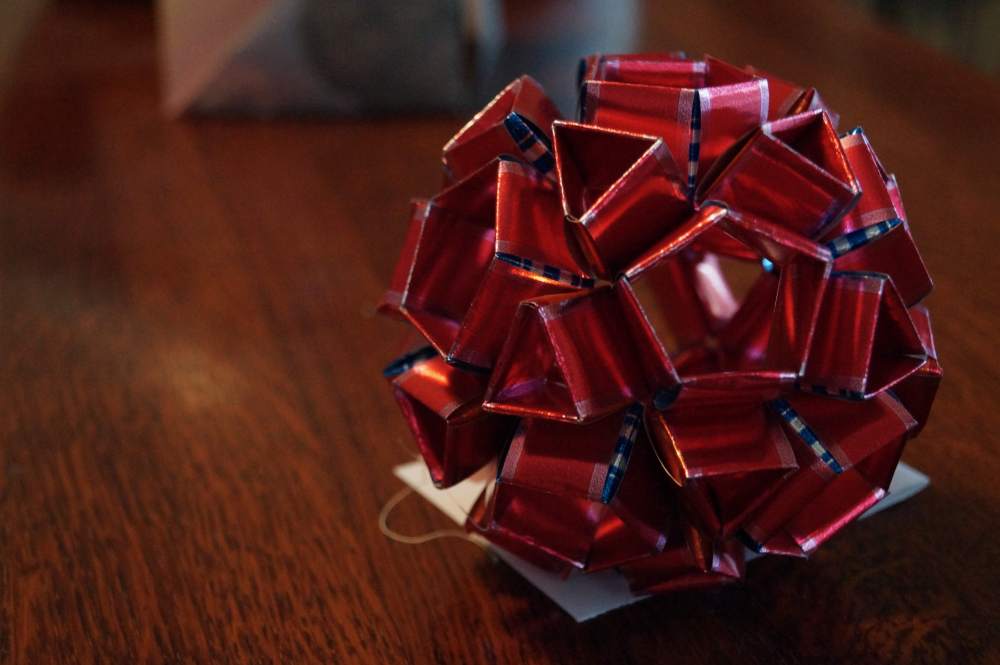
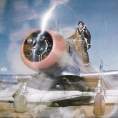




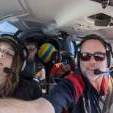

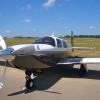
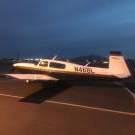
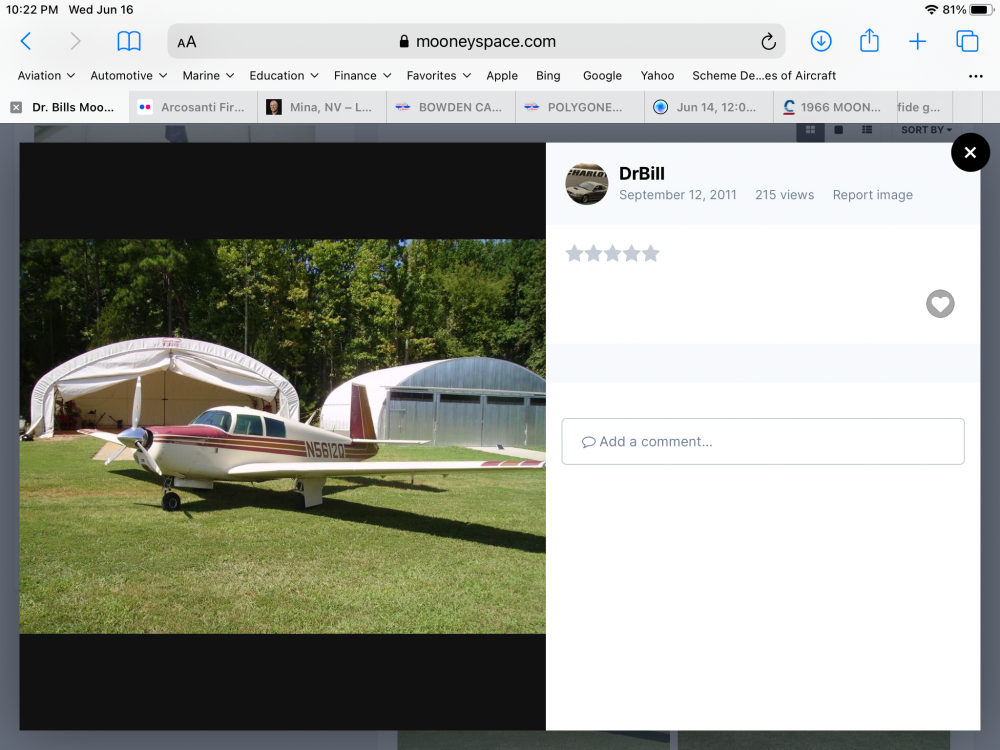

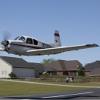
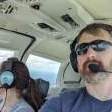
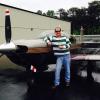


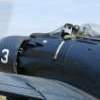

.thumb.jpg.44bc5ad17b44ec09b48bdca2a82f7a76.jpg)



